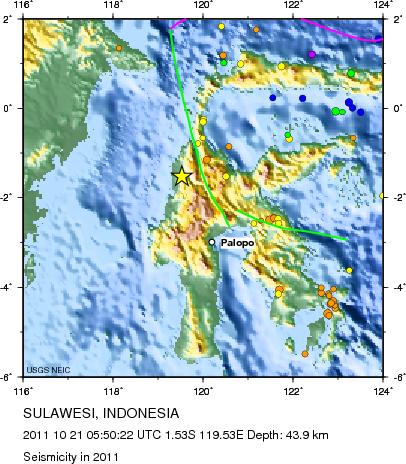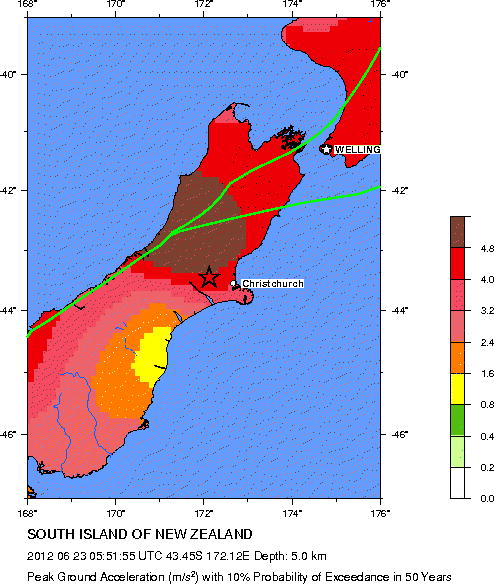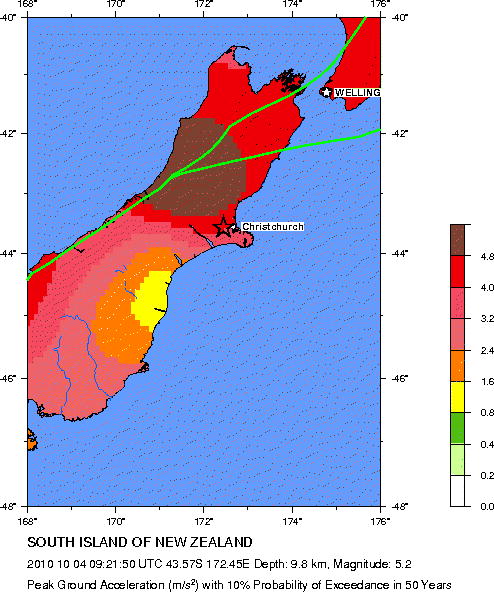

OVSICORI-UNA reported that phreatic eruptions continued to periodically occur at Rincón de la Vieja during 26 April-1 May. Rincon de la Vieja | 26 April- | New Activity / Unrest Cite this Report Source: Philippine Institute of Volcanology and Seismology (PHIVOLCS) The Alert Level remained at 1 (on a scale of 0-5) and PHIVOLCS reminded the public to remain outside of the 4-km-radius Permanent Danger Zone. Ground deformation data from continuous GPS and electronic tilt data indicated short-term inflation of the lower and mid-flanks of the volcano since March.

During the month of April, the seismic network recorded 141 volcanic earthquakes, an average of five per day, at shallow depths less than 10 km in the N and W parts of the volcano. On 30 April a Flyspec instrument measured an average of 1,099 tonnes per day of sulfur dioxide emissions at the summit crater, a value which was significantly higher than the average of 124 tonnes per day measured since March. Real-time, continuous volcanic gas monitoring of thermal springs on the N flank detected sulfur dioxide for the first time beginning in April. PHIVOLCS issued a special notice for Kanlaon at 0700 on 1 May, noting increased sulfur dioxide emissions. Kanlaon | 26 April- | New Activity / Unrest Cite this Report Source: Kamchatkan Volcanic Eruption Response Team (KVERT) Dates are based on UTC times specific events are in local time where noted.
#Usgs earthquake bulletin code#
The Aviation Color Code remained at Yellow (the second lowest level on a four-color scale). A daily thermal anomaly was identified in satellite images. KVERT reported that the ongoing eruption at Bezymianny was characterized by gas-and-steam emissions, occasional collapses at the lava dome, and hot avalanches during 20-27 April. Source: Darwin Volcanic Ash Advisory Centre (VAAC)īezymianny | 26 April- | New Activity / Unrest Cite this Report The Darwin VAAC reported that continuous ash plumes from Barren Island were identified in satellite images during 0620-1250 on 1 May rising to 4.6 km (15,000 ft) a.s.l. Sources: Vanuatu Meteorology and Geo-Hazards Department (VMGD), Wellington Volcanic Ash Advisory Center (VAAC)īarren Island | 26 April- | New Activity / Unrest Cite this Report The Alert Level remained at 2 (on a scale of 0-5) and the public was warned to stay outside of the Danger Zone, defined as a 2-km radius around the active vents in Lake Voui, and away from drainages during heavy rains. Lava flows from the vent traveled N into a small water lake, filling it in. Activity intensified during 5-7 April and was characterized by higher steam, gas, and ash plumes and nighttime incandescence from the growing cone. Volcanic earthquakes were recorded by the seismic network. On 27 April the Vanuatu Meteorology and Geo-Hazards Department (VMGD) reported that the cone in Ambae’s Lake Voui continued to produce emissions consisting of steam, volcanic gases, and ash. Ambae | 26 April- | New Activity / Unrest Cite this Report We also analyze the hypothetical alerting performance of ShakeAlert had public alerting been available throughout southern California.Smithsonian / USGS Weekly Volcanic Activity Report for the week of 26 April-Īll times are local unless otherwise stated.
#Usgs earthquake bulletin software#
A number of software and hardware issues that were responsible for the magnitude underestimation of the mainshock have been identified and will be addressed in future ShakeAlert releases.

For the M w 7.1 event, public alerts for Los Angeles County were warranted, but ShakeAlert underpredicted the shaking levels, because both the point‐source and finite‐fault algorithms underestimated the magnitude of the earthquake by 0.8 units. For the M w 6.4 event, this was accurate. No public alerts were sent out by the ShakeAlertLA cell phone app (the only publicly available alerting method at the time), because the predicted shaking for Los Angeles County was below the app’s alerting threshold of modified Mercalli intensity 4.0. ShakeAlert detected and characterized both the M w 6.4 and M w 7.1 earthquakes within 6.9 s of their origin times and created alert messages that were available to ShakeAlert’s pilot users. Although the system performed reasonably well overall, the sequence also revealed various issues and short comings that will be addressed in impending and future system upgrades. In this study, we dissect log files and replay data through the system to reconstruct the sequence of events and analyze the performance of the system during that period. ShakeAlert created alert messages for the two largest events and for many of the larger aftershocks. West Coast, was operational during this time, although public alerting was only available within Los Angeles County. Geological Survey (USGS) earthquake early warning system being developed for the U.S. During July 2019, a sequence of earthquakes, including an M w 6.4 foreshock and an M w 7.1 mainshock, occurred near Ridgecrest, California.


 0 kommentar(er)
0 kommentar(er)
